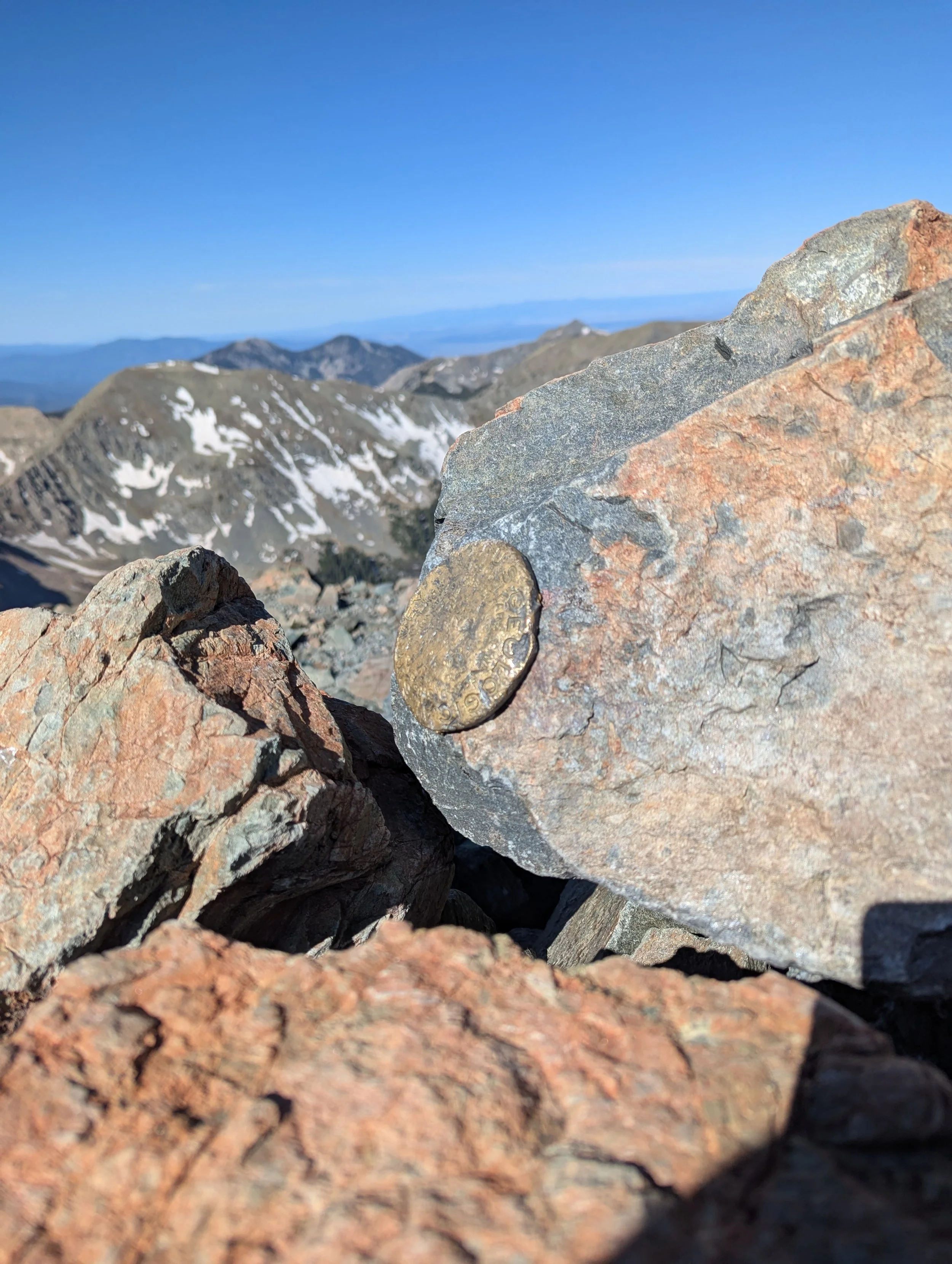Wheeler Peak, New Mexico’s High Point
From Precambrian Bedrock to Glacial Cirques: Wheeler Peak's Geologic Tale
An icy skin glazes the surface of Williams Lake at sunrise. Williams Lake sits at 11,040 feet elevation.
New Mexico’s tallest summit showcases ancient Precambrian granites and gneiss as well as some of the glacier-carved topography that is often associated more with the Rocky Mountains of Colorado and Wyoming.
The hike up to Wheeler Peak starts at the Taos Ski Valley and progresses about 2 miles up towards Williams Lake, a glacial cirque lake that sits at just over 11,000 feet elevation. For many, just the trek to Williams Lake is rewarding, and can leave those unaccustomed to high elevations breathless.
Standing atop Wheeler Peak at 13,167 feet. The high point register is located in the metal pipe visible at center.
The climb from Williams Lake to Wheeler Peak summit is not for the faint of heart. For those ready to take on the 8.5 mile hike, be prepared to gain nearly 3,000 feet of elevation to top out at 13,167 feet elevation, and rewarded with expansive views across central New Mexico and southern Colorado. The bedrock the hike climbs are granites and gneisses - a metamorphic sibling of granite - that reach over 1.5 billion years in age. These ancient rocks have been faulted, had magmas intrude into them, and been deformed for over a billion years. This “basement” rock forms the core of the Rocky Mountains from New Mexico through Colorado and Wyoming.
Glaciers cut down through these high mountains, carving out steep-edged ridgelines and leaving peaks sharp and jagged in the Taos and Truchas region. Hikers will notice the tumbled boulders in the final half mile before reaching Williams Lake: these are the remnants of a glacial morraine, the crushed and crumbled rocks carved out and pushed into a heap at the downhill edge of the cirque that Williams Lake sits in. The last glaciers melted from New Mexico about 20,000 years ago.
The battered USGS survey marker atop Wheeler Peak.



